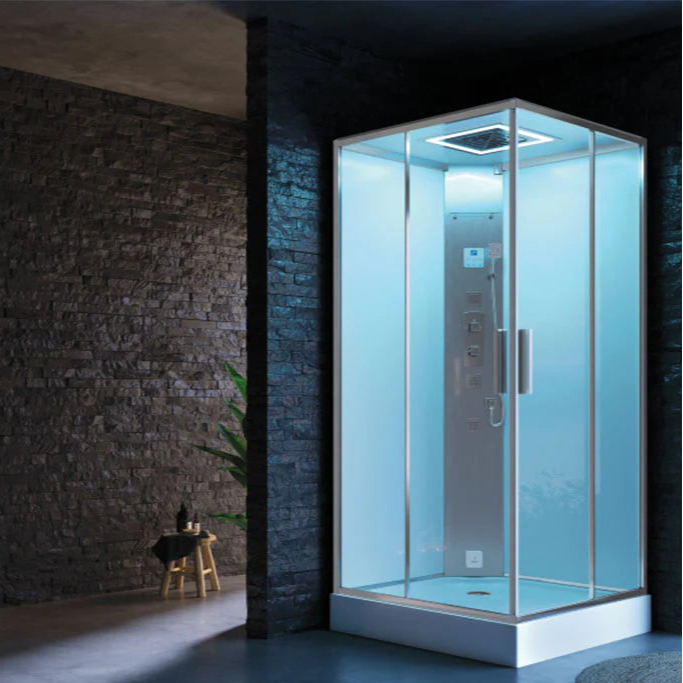Ever left a Steam Room feeling amazing—then panicked, wondering if that blissful Steam bath could give you a UTI? Short answer: Not directly, but poor hygiene can raise the risk. Steam rooms themselves don’t cause urinary tract infections. If you’re wondering whether it’s still safe to enjoy your steam sessions, don’t worry.
Keep reading for the facts and easy ways to stay protected.

Understanding the Connection: How a Warm, Moist Environment Can Increase UTI Risk
The Role of Bacteria in Urinary Tract Infections
The primary culprit: E. coli bacteria.
Most urinary tract infections (UTIs) are caused by Escherichia coli, or E. coli for short.
This type of bacteria is normally found in the gut but becomes a problem when it enters the urinary tract.
How bacteria enter the urinary tract.
Bacteria can make their way from the surrounding skin into the urethra, then travel to the bladder.
In places like steam rooms, shared surfaces and moisture may contribute to this.
Why Steam Rooms and Other Warm Environments are a Concern
The warm, moist environment as an ideal breeding ground for germs.
Steam rooms are designed to be hot and humid.
Unfortunately, these conditions are also ideal for bacterial growth—especially on unclean surfaces.
The risks of shared public spaces and lingering bacteria.
Benches, floors, and other high-contact areas may carry bacteria from previous users.
If not cleaned properly, germs can remain and transfer easily.
The link to similar environments: Comparing steam rooms to hot tubs and baths.
Steam rooms share many traits with hot tubs and public baths.
They involve damp, warm spaces and shared surfaces, where bacteria can survive.
The risks are similar—particularly when personal hygiene is neglected.
Additional Factors that Compound the Risk
Wearing a wet swimsuit for a prolonged period.
Sitting in damp swimwear keeps warmth and moisture close to the body.
This creates a perfect setting for bacteria to thrive near sensitive areas.
Dehydration and its effect on bladder function.
When you don’t drink enough water, you urinate less frequently.
This gives bacteria more time to multiply in the bladder and increases infection risk.
Practical Prevention: How to Reduce Your Risk When Using a Steam Room
Before You Enter the Steam Room
Shower beforehand for good personal hygiene.
Rinsing off helps remove sweat, dirt, and bacteria from the skin.
It also reduces what you bring into the steam room with you.
Stay well-hydrated to help flush out bacteria.
Drinking water before your session helps your kidneys and urinary system work effectively.
A well-hydrated body is better at flushing out harmful bacteria.
During Your Session
Limit your time to avoid dehydration.
Too much time in the heat can cause your body to lose fluid.
Try to keep sessions under 20 minutes and take breaks if needed.
Use a towel to create a barrier between you and the bench.
Sitting on a towel reduces direct contact with shared surfaces.
It’s a small but important step for hygiene and comfort.
After Your Visit
Urinate immediately after your session to flush your urethra.
Going to the toilet after steaming helps clear any bacteria that may have entered the area.
It’s a simple way to protect against infection.
Change out of your wet swimsuit into dry clothes as soon as possible.
Staying in damp clothing creates a perfect spot for germs to grow.
Dry off quickly and wear breathable fabric to reduce the risk.
Drink more water to continue flushing your system.
Hydration doesn’t stop after the steam room.
Keep sipping water to help your body stay balanced and clear out any lingering bacteria.
When to See a Doctor

Common Symptoms of a UTI
Pain or burning during urination.
A burning sensation while peeing is one of the most noticeable signs.
It may also come with discomfort or pressure in the lower abdomen.
Frequent and urgent need to urinate.
You may feel like you need to wee constantly—even if you’ve just gone.
Only small amounts may come out, and the urge can be intense.
Signs of a More Serious Infection
Back or side pain, fever, chills, or nausea, which could indicate a kidney infection.
If the infection travels to the kidneys, symptoms can become more severe.
Pain in your back or sides, fever, chills, or feeling sick should be taken seriously.
Seek medical attention quickly if these occur.
The Importance of Antibiotics
The role of a doctor in diagnosing and prescribing treatment.
UTIs usually require antibiotics to clear the infection fully.
Don’t try to self-treat—only a GP can confirm what’s going on and recommend the right medication.
Delaying treatment can lead to complications.
Takeaways
-
Can steam room cause UTI? Not directly—but poor hygiene and shared, moist surfaces can increase risk.
-
Bacteria like E. coli thrive in warm, damp spaces.
-
Sitting in wet swimwear and dehydration also raise your chances of getting an infection.
-
Good hygiene, hydration, and post-steam habits can keep you safe.
-
Know the signs of a UTI and speak to a doctor if needed.
You can still enjoy a Steam Room or Steam bath—just steam smart!






